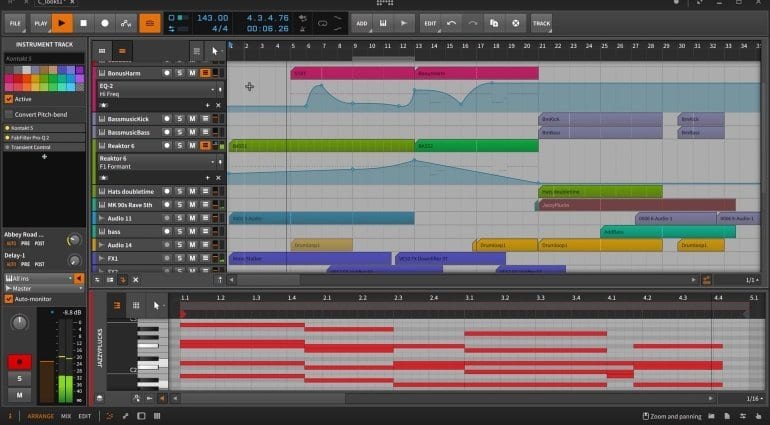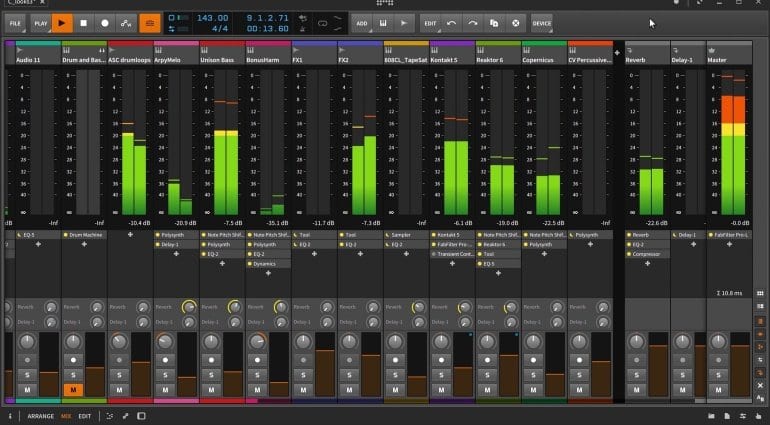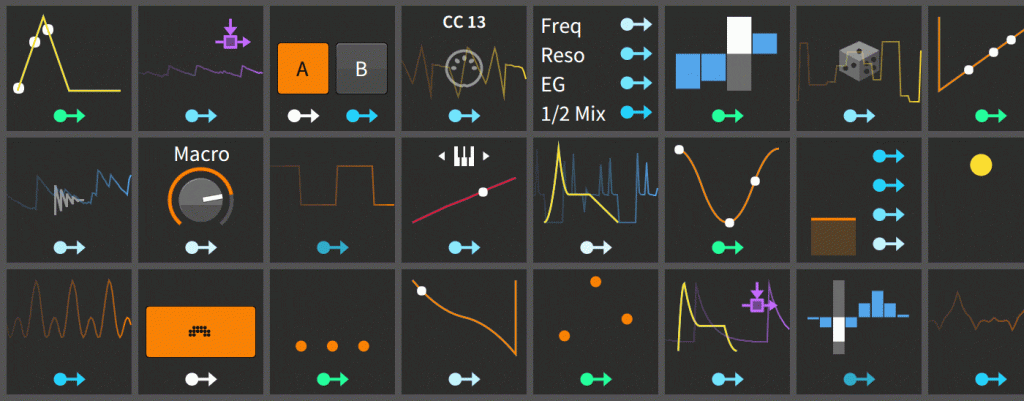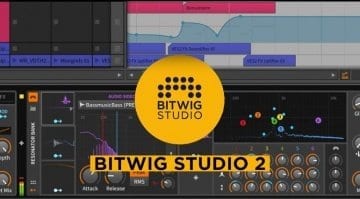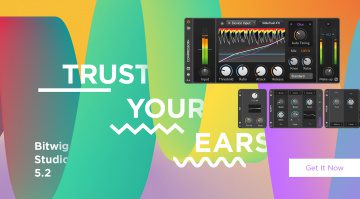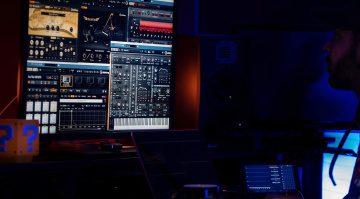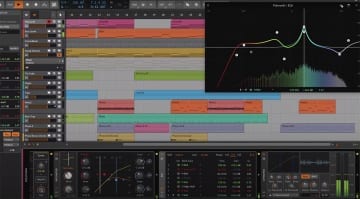Bitwig announce Bitwig Studio 2
Originally released in 2014, Bitwig Studio was a breath of fresh air to the world of computer-based music production. Taking many of the best things from Ableton Live, they added a super fast workflow, their own devices and an innovative interface. They have just announced Bitwig Studio 2, let’s have a look.
Bitwig Studio 2 Catch up
There have been a number of things missing from Bitwig that are common in other DAWs – but we are talking about version 1. Version 2 appears to address some of those areas which may seem obvious. Track height is an important one. You can now vary the height of tracks individually (crazy!). Crossfades and fades are now possible in the timeline. You can also do this inside of the clips themselves – Bitwig always likes to innovate, even from behind.
VST3 support is included which also supports per-note expression and sample accurate automation. This adds to the already uber-stable sandbox approach Bitwig has to plug-ins.
The tools have been smartened up so that they dynamically change depending on what your mouse is pointing at. The arranger and detail editors now have their own tool selectors. And right-clicking now deletes notes in the note editor.
One new feature that makes me roll my eyes is the inclusion of a Dashboard – those bloody annoying pages that get in the way of you working on your projects. Apparently, it will be awesome.
Modulation Innovation
Nice though it is for Bitwig to bring itself more inline with other DAWs what I really like to see is where they innovate. Modulation is one of those areas and they have gone to town on this. You could already modulate between devices but version 2 runs off down the road with it. Each device will have modulation slots where you can load individual modulators. There’s 24 brand new modulators to choose from. There are envelopes and LFO’s of course but also types like Random, Select-4 and Math. You can drop in as many as you like making for a nice bit of evolving and expressive chaos. Bitwig’s own instruments also support polyphonic modulation, enabling per-voice modulation – nice!
New Devices
So many recent DAW updates don’t seem to include many new synths or plug-ins these days so it’s good to see Bitwig buck the trend. They’ve re-designed all the existing ones and added a whole bunch of new ones. These include a Spectrum Analyzer, Phaser, Pitch Shifter and Treemonster audio effects. On the MIDI side there’s Multi-note, Harmonizer, Length, Echo, Latch and Velocity plug-ins.
CV/Gate
Among the new devices are a fist full of devices for hardware integration. The MIDI CC device sends CC data out to external synths and the MIDI Program Change… changes programs which were two of the omissions from the first version. The HW Clock Out can send CV clock to audio outputs with individual time settings. HW CV Instrument can send notes as CV and gate to an output on your audio interface to control external analog synths and Eurorack. And finally HW CV Out which simply sends a CV signal out of your interface – some modulation perhaps.
Sending CV signals out of an audio interface usually requires it to be DC coupled – not that many interfaces support it. I wonder if they’ve done something clever to enable this on non-DC coupled interfaces?
Multi-touch?
Bitwig is renowned for its touch screen support. There’s no mention of any multi-touch elements or improvements for version 2. We can only hope that it’s still as touchy as ever.
When and how much?
Bitwig Studio 2 will be available on the 28th February 2017 for Windows, Mac and Linux and is priced at €379 / $399 or €159 / $169 if you are upgrading. It’s free if you purchased version 1 after the 10th December 2016. They are also rolling out some kind of 12 month license upgrade thingy which they say enables them to release things as they are completed rather than waiting for major updates. So love it or hate it you’ll be looking at €159 every year to keep current.
More information is available on the Bitwig website and I imagine there’ll be loads of coverage at NAMM to look forward to. You can also sign up for the beta if you are an existing user – I most certainly have.
You are currently viewing a placeholder content from YouTube. To access the actual content, click the button below. Please note that doing so will share data with third-party providers.

